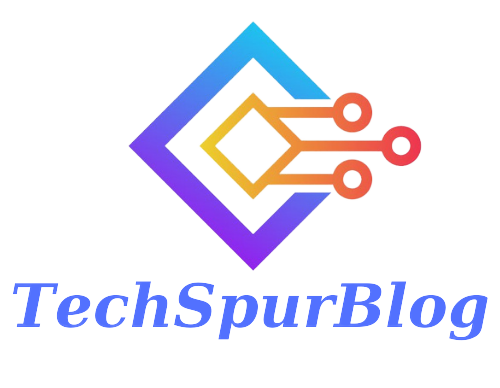Most businesses require an online presence. Certain businesses opt to build mobile-friendly websites, while others use advanced web apps. However, mobile apps are the most efficient and user-friendly solution. There are many ways to build a mobile-friendly application for your company.
Customization is expensive, and businesses that aren’t technically proficient and require a presence on the mobile platform have been reluctant to build mobile apps. This is when white-label apps are available, giving companies a standard solution with the lowest cost. Customization is expensive, and businesses that do not require a presence on the mobile market have been hesitant to develop their mobile apps.
In the article, you’ll find out what white-label software is, why apps developers UK utilize it, its advantages and disadvantages compared to custom applications, and tips on picking the best strategy for your company.
What exactly is a white-label application?
- A white-label app is designed to be resold to various businesses, with all access rights for the program. If a company purchases a white-label application, they can customize it to make it their own.
- Most white-label applications are industry specific and have characteristics common to the specific type of application for a particular sector.
- For instance, e-commerce apps generally have a similar structure: They have lists, searches, and filters, as well as checkout, and the list, goes on. Suppose a small-scale retailer wishes to offer customers an application for their mobile device without the lengthy and expensive mobile application development. In that case, they could license a white-label application, include their company colors and logo, alter certain features, and promote the application to their customers.
- Certain companies purchase white-label apps to sell to other businesses with a customized version. White-label apps are well-known in various industries, from tourism to e-commerce.
Types of white-label apps:
Two primary kinds of white-label apps differ in how comprehensive they app is. A white-label application provider may offer just the client side of the app or sell you a complete app that includes both client and server sides. What is the difference between the two alternatives?
If you’re only getting the back end of your application, you’re free to develop the front end independently. This allows you to have greater flexibility and more customization options. But, if you don’t have in-house developers, you’ll have to employ someone to develop the front-end on top of the foundation of a white-label app.
White-label apps have advantages. You’ll have to tweak it a bit if you buy a fully developed app that includes both client and server components. The disadvantage of this strategy is that it leaves little room to customize and scale. When your company needs something more than what you currently have, for instance, greater functionality or a system capable of handling a more considerable amount of work, you’ll have to look for a new solution.
White-label application vs custom app What’s different?
White-label software development offers you an entirely or partially-ready solution that you can modify to a certain extent. It’s not a huge expenditure, and you’ll get an item you can label and promote as your product to your clients. Any company can utilize white-label software within your industry.
Custom development is an entirely different method of bringing your company into the mobile market. When you create your custom application, you design it specifically for your company’s requirements and the audience you want to reach, and it is a reflection of your processes and procedures.
Custom-built apps are generally more adaptable and flexible than white-label alternatives, and you can rest assured that the structure of your app is designed with your objectives in mind. If you intend to modify your application to keep pace with the latest technology trends or add new functions, you’ll be able to accomplish it.
Let’s discuss in greater detail the difference between white-label and custom apps based on these criteria:
- Customization
- Design
- Cost-effectiveness
- Flexibility and scale
- Maintenance
- Security
- Probability of rejection of apps by stores
Customizability:
In terms of customization possibilities, a custom-designed application is the best. White-label apps don’t offer any room for customization or personalization. They typically offer only the option of changing specific colors and labels if they’re full solutions that have the front and back end.
If you purchase the front end, you will have more flexibility in modifying the app’s appearance and feel, and you can even add your features; however, the limitations from the back end are still in place.
However, when you design your application, there’s a more likely chance that your application will reflect your company’s brand and mission and be tailored to your specific market. This is possibly the primary advantage of having a custom application.
Custom app development is where the possibilities for customization are only limited by the structure and the technology you select. This is why it’s crucial to select apps developers UK who can take your needs for the future into account. You’ll never know what’s underneath the hood when you use white-label applications.
Design:
In this article, we’ll focus on white-label options that provide the application’s client component with an initial layout. Since white-label applications are designed to be used by any company in a specific area and will most likely adhere to the standard design guidelines within that particular domain.
Most likely, you’ll be able to alter only the design of certain elements and the color and label; however, you won’t be able to change much more. Your app will appear exactly like hundreds of other applications from companies that have purchased the same white-label option.
Customizing your app’s design allows you to reflect your brand’s image and incorporate small, subtle touches such as animations for the user interface. While it may not seem significant, your app’s style reflects your dedication and love of users. People know it.
This may not be important for an MVP, but to establish a solid mobile presence, you must concentrate on the user experience.
Cost-effectiveness:
Cost is among the most significant white-label application advantages. A white-label app purchase is much less expensive than developing your app. If you create your application, it is not just paying for development but as well for analysis of business, design quality assurance, maintenance projects, project management, and more. Today, most apps require substantial investment since the marketplace standards are very high. Despite all the custom app advantages of development, many apps’ developers UK require lower-cost alternatives.
White-label applications are appealing since they provide ready-to-use functionality at less than. But once you decide to increase the capabilities of your app, however, you’ll need to finance development. Sometimes, modifications aren’t possible, even if you’re prepared to shell out the money.
That’s why white-label apps are great for testing waters. They allow users to build an MVP and then test your concept in the real world to determine whether investing in an entire custom app is worth it.
Blog Suggestion : Best Free Android Apps You Should Have in 2022
Scalability and adaptability:
Software development is characterized by its ability to scale. Maybe a reference to various things:
- New features added
- Processing more users
- Moving to different platforms
- Working on new devices
In all of these scenarios, white-label applications are not capable of scaling. Suppose you’ve purchased an iOS application but decided you’d also like to access the Android audience. In that case, you’ll either have to develop an Android application or wait for the vendor to launch the Android version.
Imagine that your custom app development company has expanded in a particular market, but you plan to expand your business to different countries. In these countries, users might use different operating systems and devices as compared to your original market, and you’ll require your app to be able to function for the new users you are targeting. Modifying your white-label app will be difficult because it’s designed to work with a specific operating system and number of devices. Custom applications are more flexible in this way.
Maintenance and Support:
Both a custom as well as a white-label program must be accepted. The problem is which is the easier to manage.
On the other hand, white-label products are resold in with the assumption that their code has been checked and tested. The development of your app could cause more issues and inconsistencies.
It’s the quality of the software that counts. An excellent white-label product is easier to maintain than a poorly-designed custom application. However, poor-quality white-label applications are also typical. Whatever method you decide to use, ensure that you purchase an excellent product or work with experts in the field of development.
Security:
It’s not easy to create a secure app. If you decide to go with the custom development option, it is essential to be accountable for the security of your app. This requires additional effort as well as regular security examinations. The best part is that you’ll have complete control over your app’s security, performance, and quality.
White-label applications receive ready-to-use code, but you have no control over the security of your application. If you’re not sure of what’s inside the app and you’re not sure, seek out a custom app development company to conduct a security review of your white-label application.

We are a team of enthusiastic people who want to share our experience, knowledge and enterprise with the world. We love what we do and we hope you will too!. We pride ourselves on being the global leader in developing Techspurblog as a technology blog, which can create original content.






